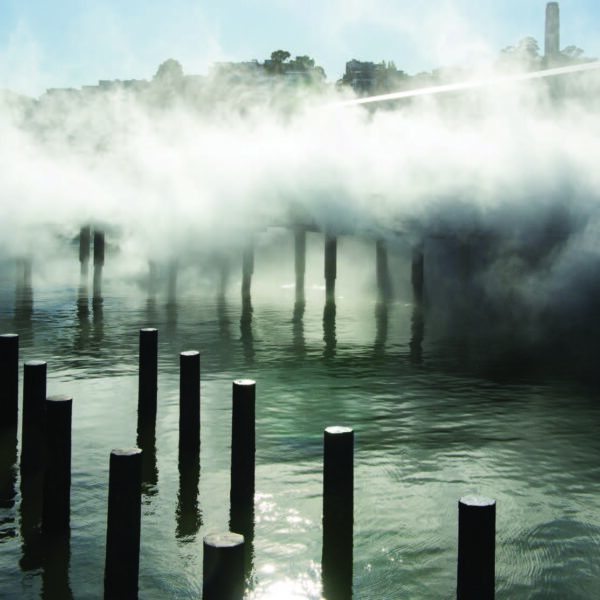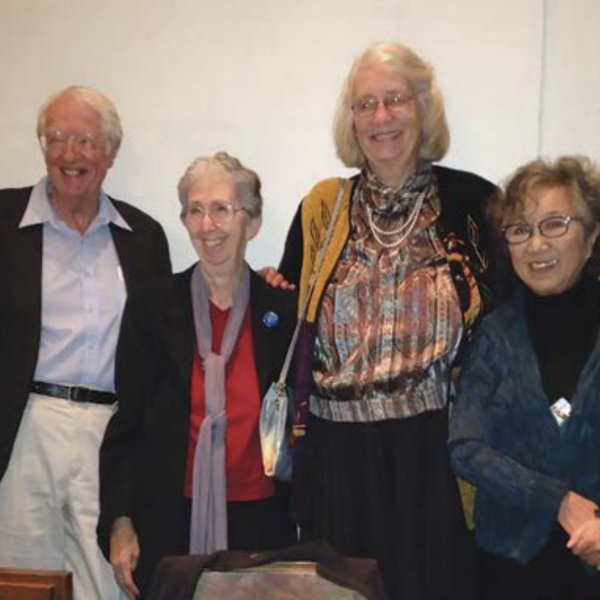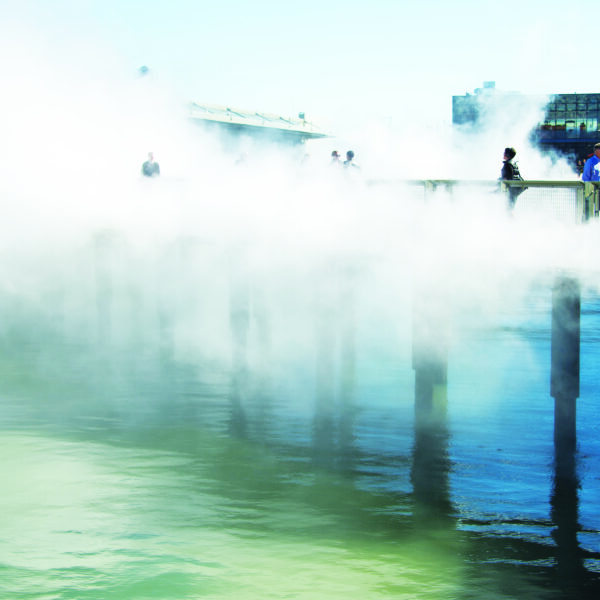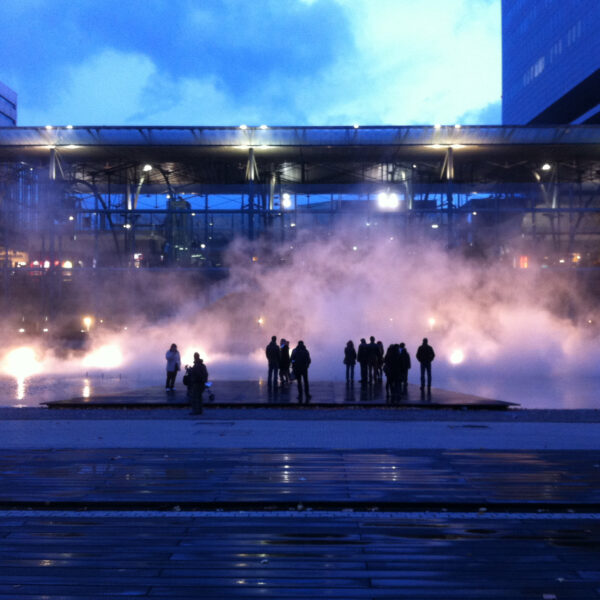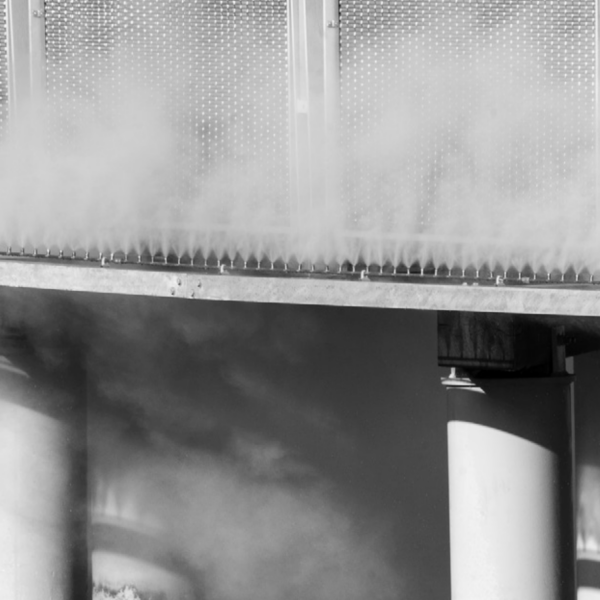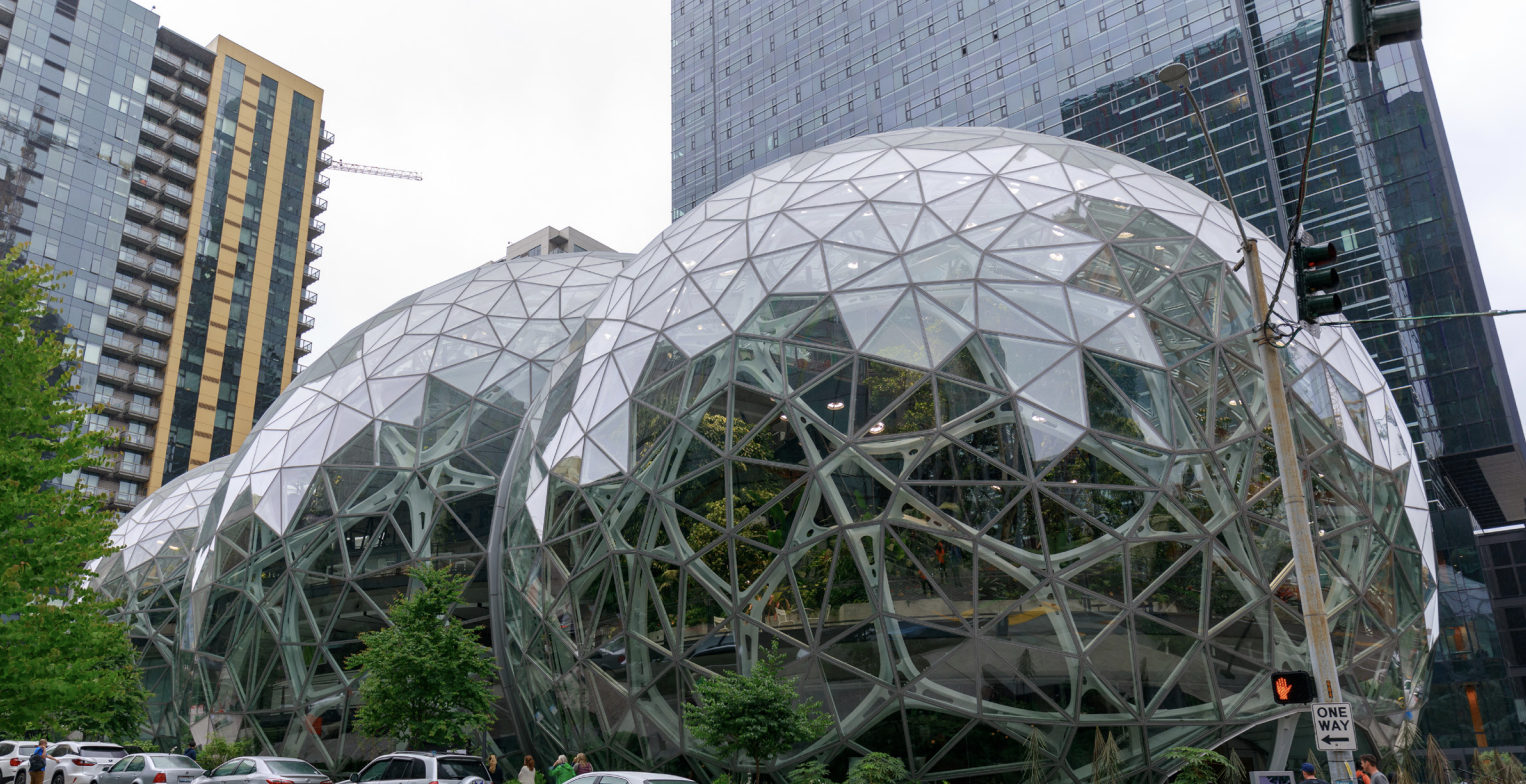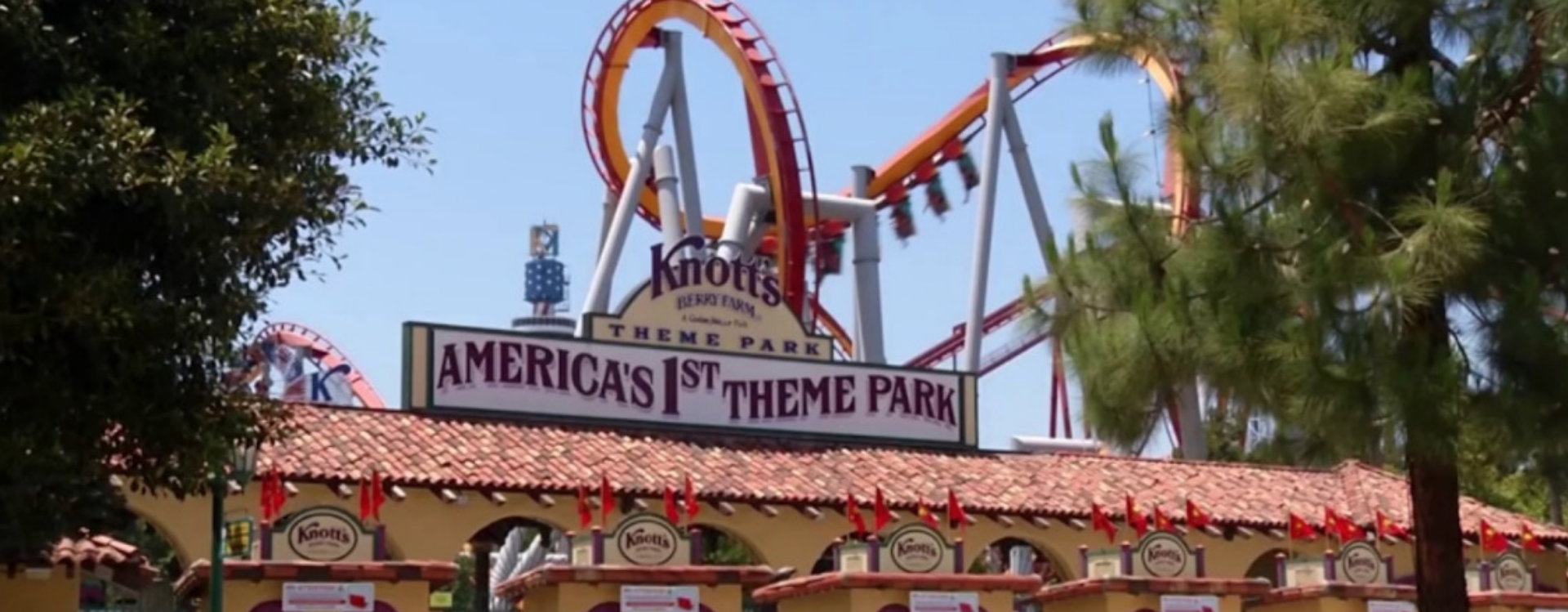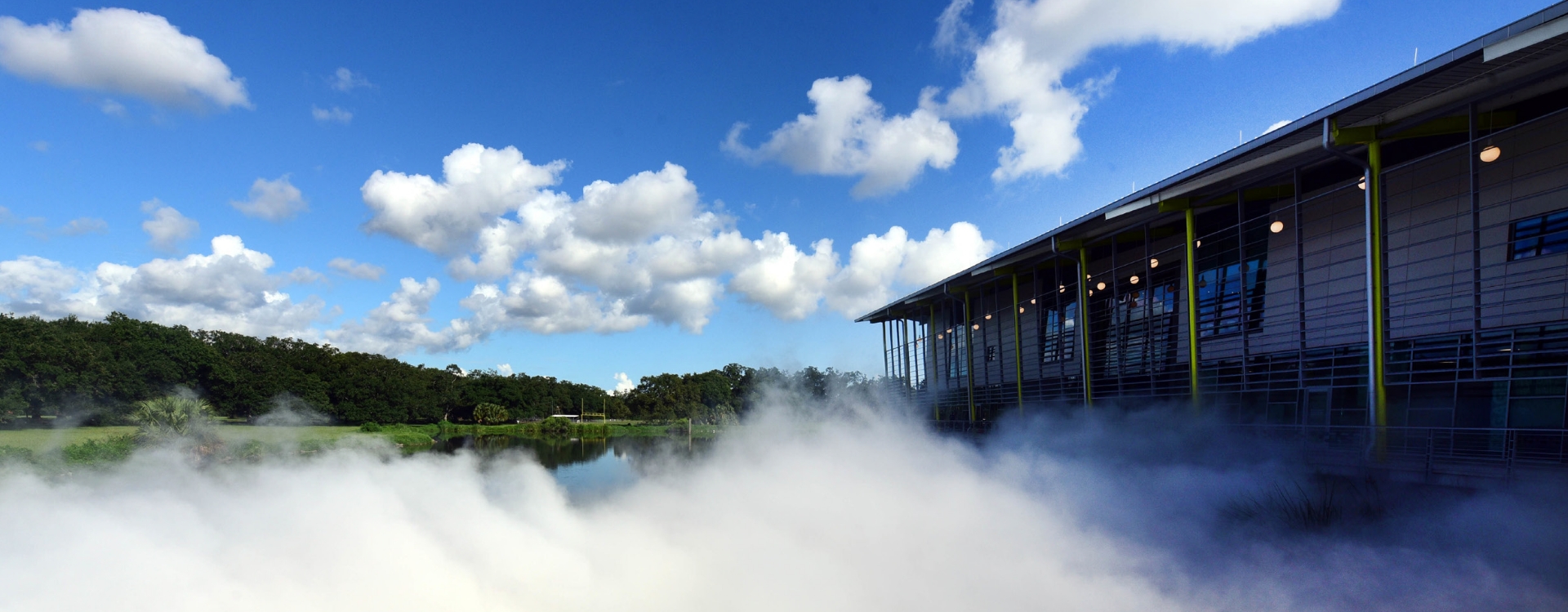Exploratorium Commissions Renowned Artist for a Fog Sculpture in Collaboration with Mee Industries
Fog Effects & Mist Cooling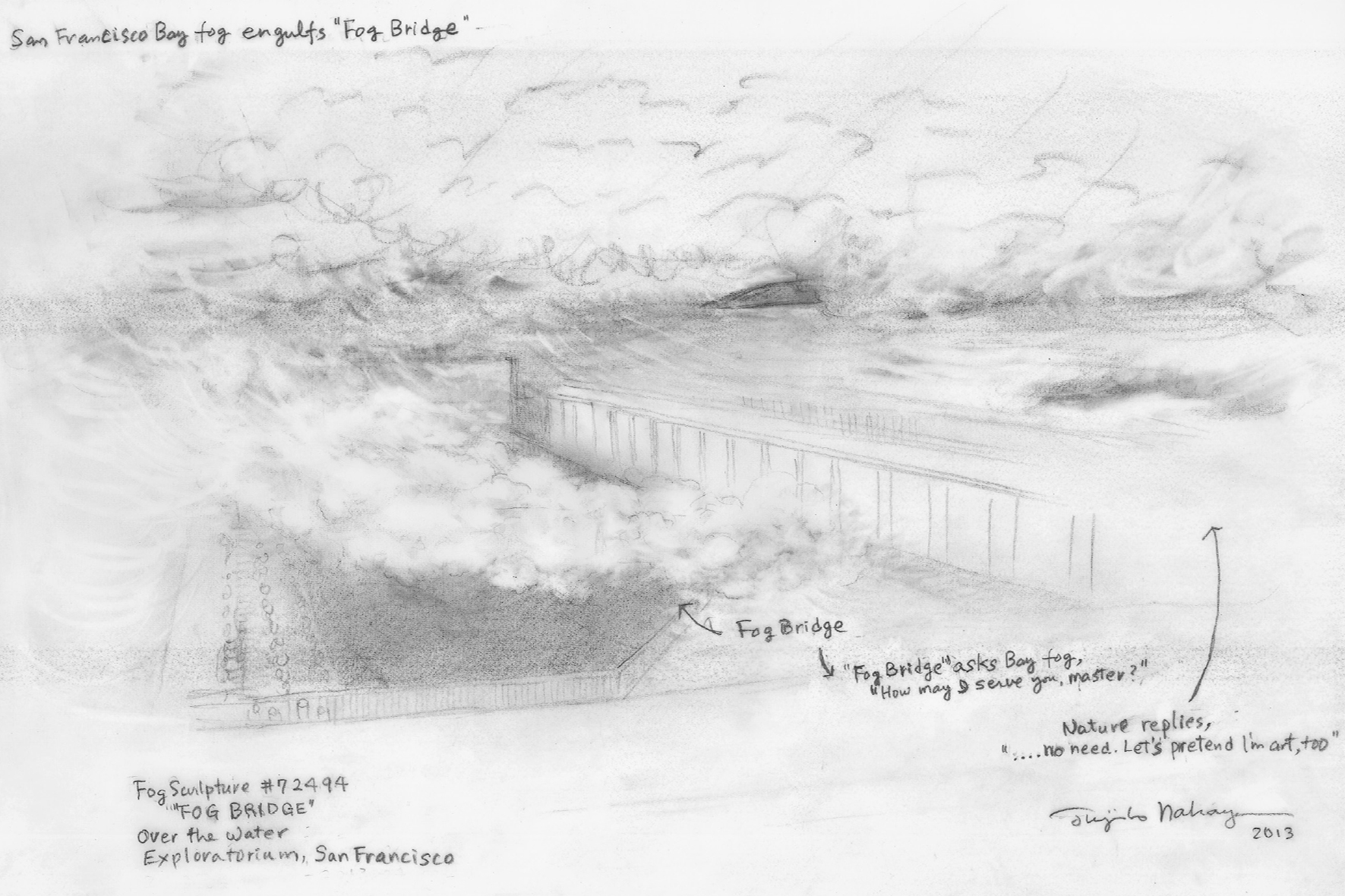
The Exploratorium San Francisco, California Since 1969, San Francisco’s Exploratorium has sat at the intersection of art, science and human perception. Founded by experimental physicist and educator Frank Oppenheimer, the Exploratorium’s hands-on exhibits explore biology, physics, listening, cognition, visual perception, social behavior, and the environment. In addition to 550 employees, a quarter of them Phds, the Exploratorium has hosted 250 artists in residence. .
The Challenge: The Exploratorium wanted an inaugural artwork for its “Over the Water” series to attract interest and draw visitors to its new location.
The Solution: They selected Japanese artist Fujiko Nakaya to create a fog sculpture along a bridge connecting Piers 15 and 17 with the help of a specially designed Meefog system.
Opening Exhibition:
As part of the opening celebration, the Exploratorium commissioned renowned artist, Fujiko Nakaya, to create Fog Bridge, a fog sculpture along a bridge linking Piers 15 and 17. “On a pure physical level this piece is simply water floating in air, interacting with light,” says Exploratorium Director of Exhibits, Tom Rockwell. “But add a human witness and it becomes a dynamic art piece, one that sculpts fog, air, and light for visual and sensorial pleasure.” Collaborations between Mee Industries Fogging and Commercial Humidification Systems, and Fujiko Nakaya continued throughout the years including a permanent installation at the Guggenheim Bilbao Museum and a temporary one for Paris’s Nuit Blanche (White Night) celebration along the Champs Elysee in 2013. “Fog Bridge is an homage to San Francisco, recalling the beautiful experience of the city’s fog,” says Nakaya. ”It is like talking to nature and nature giving you back more than you can imagine.”
Artist Background:
Fujiko Nakaya was born in Sapporo, Japan, in 1933. Her father, physicist Ukichiro Nakaya, is renowned for, among other things, creating the first artificial snow in his laboratory at Hokkaido University. But Fujiko Nakaya chose to spend her life working with water that was in motion, rather than frozen, creating sculptures out of artificial fog effect. Nakaya’s work with fog sculptures began when Experiments in Art and Technology (E.A.T.), founded by Bell Laboratories engineer Billy Kluver and artist Robert Rauschenberg, was working on the design of the Pepsi Pavilion for Expo ’70 in Osaka, Japan. E.A.T. had decided to create an artificial cloud to surround the building and enlisted Nakaya to oversee that project due to her connections with the meteorological community through her father’s work. While the clouds could be produced chemically, Nakaya wanted to produce the effect using water, something which had never been done. Kluver put her in contact with cloud physicist Thomas Mee, Jr., a former Cornell University researcher, then living in southern California. The problem was how to create water droplets of the right size so that they would have characteristics similar to natural fog: remaining suspended in the air, rather than immediately falling to earth. Conducting experiments in his back yard, Mee developed the technology necessary to create the first water-based artificial fog. The technology consists of using high pressure pumps to direct the water through a series of tubes to an array of specially designed nozzles. The water then sprays through a tiny .006” orifice and immediately strikes the point of a pin, which splits the water stream into billions of minute droplets with diameters in the range of 15 to 20 microns.
The Installation:
Mee installed four high-pressure pumps to direct water to an array of 832 specially designed nozzles placed along the bridge. An anemometer was installed to measure the wind speed and a computer program controlled the pumps to create the right amount of fog depending on weather conditions. “We love being able to continue our collaboration with Ms. Nakaya in creating these sculptures,” says Mee Industries CEO Thomas Mee III. “Most of our fogging systems are used for commercial humidification and industrial purposes and hidden away inside ducts or buildings, but her sculptures allow millions of people around the world to appreciate fog’s natural beauty.” While Fog Bridge was originally scheduled to close October 2013, due to its popularity the Exploratorium wanted to extend the exhibition. To make this possible, Mee Industries donated the equipment so that visitors can continue to experience the fog sculpture indefinitely.
Learn more about successful Mee Industries fogging systems installation projects and case studies!

